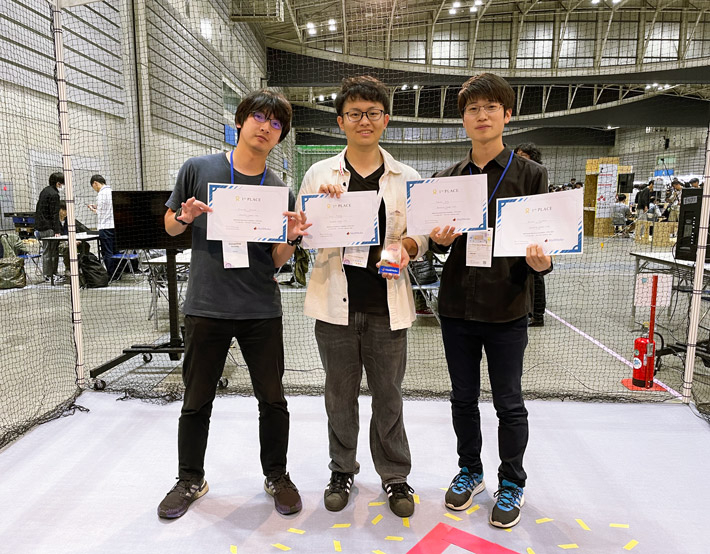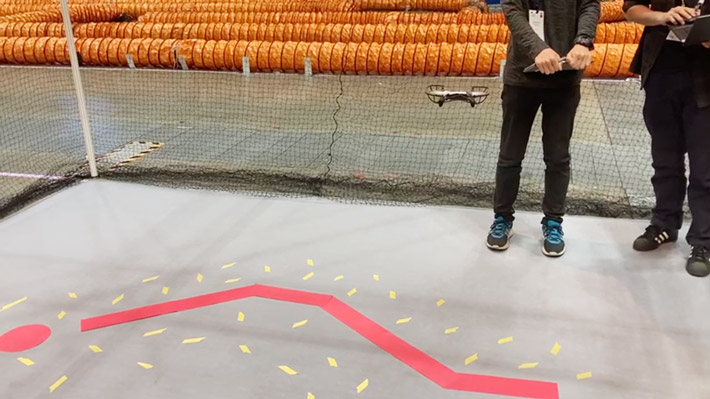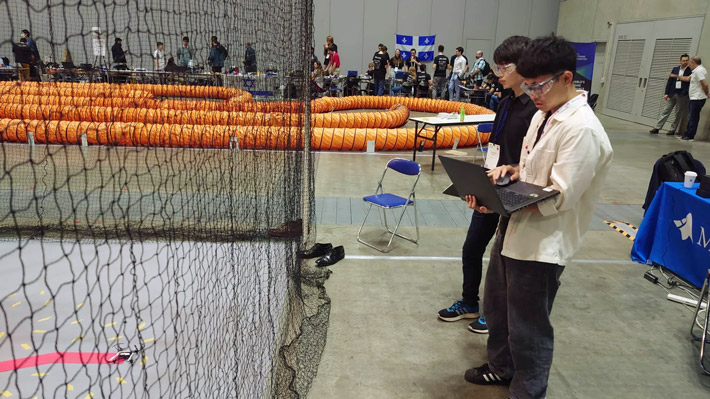Team Yamakita-Sampei-Lab, consisting of three Tokyo Tech students and one alumnus of the Institute, has won the recent MathWorks Minidrone Competition. The contest was held on May 15 and 16 at the Pacifico Yokohama convention facility, in conjunction with the 2024 IEEE International Conference on Robotics and Automation.

Three of four Team Yamakita-Sampei-Lab members (from left): Aoyama, Fukuda, Sugihara
During the MathWorks Minidrone Competition, teams use minidrones equipped with cameras to detect lines marked on an arena, follow these lines as quickly and accurately as possible, and then land on an end circular marker. The actual minidrone is lent to teams on the day of the competition, and the track is disclosed to teams only on the day of the final deployment round, so teams must create an algorithm that assumes all possible lines.
This year, 74 teams from around the globe participated in the preliminary simulation round, and only the top five teams advanced to the final deployment round. Team Yamakita-Sampei-Lab struggled with the differences in computing power and camera accuracy between the simulation environment and the actual deployment. However, the team still outperformed the competition and took first place.
Team Yamakita-Sampei Lab members
Takumi Ito, 2nd-year doctoral student, Systems and Control Engineering
- Kenji Fukuda, 1st-year doctoral student, Systems and Control Engineering
- Ryuma Sugihara, 1st-year master's student, Systems and Control Engineering
- Yunosuke Aoyama, Class of 2023, Systems and Control Engineering

Adjusting algorithm before final round

Trial run during finals
Comments Team Yamakita-Sampei-Lab representative Kenji Fukuda
We formed our team by bringing together people from two labs in the Systems and Control Engineering Department, as well as an alumnus of the same department. It was our first time competing in this contest. There were discrepancies in performance during the simulation and the final round, but we were able to share knowledge, make improvements, and win the final as a team.
One reason for our success was our ability to implement the best possible control method through repeated team discussions. We made maximum use of the knowledge of control theory, motion planning algorithms, and image processing that we had acquired during our studies at Tokyo Tech. Also, since we have been using MATLAB and Simulink by MathWorks for some time within the Department of Systems and Control Engineering, we were able to navigate the contest rules in a familiar development environment. We feel that was also a major contributor to our success.
We are delighted that we were able to demonstrate what we have learned at Tokyo Tech and within our department. Going forward, we want to make the most of this experience and continue to work even harder in our own research activities.






